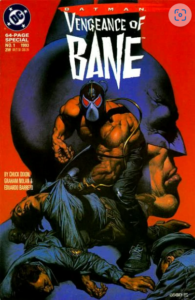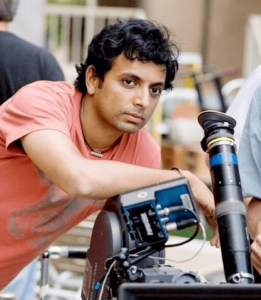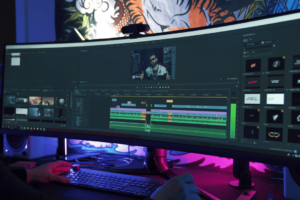You may be wondering how to become a model. Modeling is not just a career but a craft that requires abilities to build composure and confidence. It is a field that takes you to places and gives you exciting experiences. However, owing to the competitive nature of the industry, one must always be well prepared. This article helps you prepare and learn how to become a model, what models do, and what knowledge and training they require.

What do models do?
A model uses their physical looks to promote a brand or a service or to aid in the production or presentation of art. As a model, you must care for your skin, hair, nails, fitness, facial expressions, and poses. In addition, you pose for magazines and find impressions in ad campaigns. For example, a model may collaborate with a photographer to produce fashion images or walk down a catwalk to reveal a fashion designer’s most recent clothing collection. When creating a drawing, painting, or sculpture, artists frequently use models to pose for them. For commercials and marketing initiatives, businesses use models for their promotional activities.

How to become a Model?
You can send your portfolio to production houses and modeling companies when you are confident enough in your abilities. Showing up for auditions whenever possible boosts confidence and helps to establish a presence in the industry. Also, start tagging productions and agencies in your social media post to get their attention. Ensure the tags you use are pertinent and avoid using them excessively. Once you begin receiving tasks, aim to build a clientele for a consistent workflow. The below list gives an idea to get a start as a model.
- Decide on the kind of model you want to be
- Practice beforehand at home
- Get proper training
- Build your portfolio
- Hire an agent
- Learn with classes and courses
- Look for opportunities
- Be active on social media

Types of Fashion Models
There are many types of fashion models, and one can choose what one wants to do as a model. Below are the various types of models in the fashion industry.
Part Models
In product photography, parts only portray one particular body component. For instance, they can showcase fresh nail polish on their hands or new sandals on their feet. However, to keep their unique feature in top shape, parts models must put extra effort and take meticulous care into them.

Fitness Models
Fitness models must be in top shape at all times. Regular workouts and exercise help to get a perfect, toned appearance. Fitness models get to work for periodicals, promotional products, workout gear, or gym settings.

Plus-size Models
Models larger than the editorial standard are considered full-figured or curvy in the fashion modeling industry. They primarily serve as models for plus-size fashion lines.

Editorial Models
These models frequently showcase the most recent creations from a specific fashion designer or apparel brand in fashion publications like Vogue or Harper’s Bazaar. Editorial models work in photo shoots per fashion photographers’ directions while pursuing their creative instincts to help get the right shot. Regarding height and weight, female models are usually five feet nine inches tall and thin; male models are generally around six feet tall and lean.

Runway Models
During fashion shows, these models walk the catwalk, showcasing carefully selected fashion that establishes the fashion industry’s current mood or upcoming trends. All runway models fall into one of several categories based on their height, which is usually over five feet nine inches and thin.

Promotional Models
Promotional models are hired by brands to promote their products. Influencers also work as promotional models for brands and are employed to sell the products and services to target customers.

Swimsuit Models
Swimsuit models display the newest summer swimwear by posing in bathing suits. The most well-known aspect of Sports Illustrated is its coverage of athletic swimsuit models.

Lingerie Models
Lingerie models pose wearing underwear for photo shoots, periodicals, and catalogs. For lingerie firms and designers, these models also work the catwalk to display the newest undergarment trends.

Catalog Models
The relatable image the models carry ensures businesses recruit these commercial models. More flexibility is available in catalog modeling. Instead of runway-ready supermodels, catalogs often use models who resemble regular people. This commercial modeling category includes retail apparel and more widely available consumer goods.

Glamor Models
Usually, the hiring criteria for glamor models are their physical appeal and sexuality. For select periodicals, calendars, and music videos, brands and photographers invite glamor models to attract audiences’ attention.

Skills required to become a Model
The following skills and requirements are mandatory to become a model:
Passion
Passion speaks in the way you present your work. You must be enthusiastic about posing as models and develop a keen interest in performing in front of cameras. However, looks are not the only thing in modeling. It is an art and a craft that needs effort, practice, confidence, and persistence.

Technical knowledge
Although training is not required, a technical understanding of photography, cinematography, lighting, set design, costuming, and make-up will make it easier to collaborate with experienced technicians and the pros in the industry. A competent model may simplify their jobs for photographers, costume designers, and make-up artists.

Looks
Models must be conscious of their features and their physical appearance. Additionally, they must be able to highlight these qualities in front of the camera consistently. Maintaining a lean, fit body is crucial for most modeling jobs.

Confidence
Confidence is as important as physical looks. You can advance your modeling career by being confident on and off camera. You must also be able to wear any attire confidently and carry it with grace.

Determination
The competitive nature of the modeling industry may make it hard to have a steady income in the early stage. However, it would help if you made a regular effort to expand your professional network and portfolio. At times, specific projects would also require you to follow stringent diets and workout regimens.

Stamina
Working on lengthy shoots where you switch between several outfits, backdrops, and stylings throughout the day becomes unavoidable for models. Maintaining poses for an extended period takes a lot of energy. Also, you will have to work with visual artists regularly.

Steps to start as a Model
Create content for your portfolio
Start photographing yourself at home and build material that can go into your portfolio. Give yourself a variety of modeling assignments and document your performance. It can be a traditional hard copy comprising glamorous/ professional 8-12 images detailing your modeling career and forte, a tearsheet or test shot that featured you, or an online portfolio showing your charm and industry experience.

Develop your personal social media profile
Your social media handles help you get reliable feedback from your circle. You can use this feedback to identify traits that appeal to a larger audience and build your style accordingly.
Attend workshops and take courses
You can attend a modeling workshop or take a professional course to learn from established practitioners. Such engagements can also go on your portfolio as an indicator of your modeling knowledge.
Collaborate with professionals in associated domains
Collaborate with professionals in domains associated with modeling, like photography, styling, and costume design. Many practicing professionals develop content for their portfolios and market themselves through collaborations.

Take part in pageants and competitions
Try your luck at competitive events to see where your qualities stand compared to other aspirants. In addition, competitions provide good opportunities for networking and help you get noticed by your peers and other professionals in the field.

What is a Casting call?
Models are interviewed at casting calls or go-sees in a variety of ways. Either the public can attend them, or agencies organize them. You’ll need to stand (or walk, if it’s a runway) for the casting agents and bring your call card (or comp card) with your measurements, clothes size, shoe size, and contact information provided. Go-sees are frequently chaotic and seldom start on schedule. It is best to bring a book to read, check for some videos on modeling to make yourself feel confident, and a pen and a notepad to note anything important while you wait. Be respectful and professional; a negative attitude can get you block listed more quickly than your appearance.
What are the physical requirements to become a Model?
Models are required to fulfill minimum height requirements. Yet, these requirements are not standard across the industry. Here are some general height requirements for models.
- The minimum height requirement for runways and fashion shows for male models is typically 5 feet and 11 inches. For female models, the minimum height requirement could be 5 feet and 9 inches.
- For print ads and commercial modeling, most casting agencies prefer females with a minimum height of 5 feet and 3 inches and males with a minimum height of 5 feet and 7 inches.
- Options like face and hair modeling, neck and shoulder modeling, nude and artistic modeling, hand modeling, and fitness modeling do not have minimum height requirements.
- However, Pageants and Competitions may require models with height more than the minimum requirement.

Tips to become a successful Model
Modeling and fashion may sound glamorous and exciting, but it is another workspace with its own hardships and demands. However, a few tips can help a model enhance the portfolio and break the ice as a beginner.
- Learn how to walk gracefully.
- Get a Tan or use a bronzer for naturally dark skin.
- Practice facial expressions.
- Wear clothes that fit your body.
- Hair should always be clean, trimmed, and styled.
- Always wear the right amount of accessories.
- Ensure the photo is edited professionally.
- Always look happy, smiling, and friendly.
- Practice poses for perfection.
- Meticulously follow the direction of your photographer, artist, and director on your poses.
- Avoid complaining and arguing with your creative directors.
- Welcome criticisms and feedback.

What is the best age to start as a Model?
According to the widespread view, there is no age limit or any such thing as being “too young” to start modeling. However, sixteen is the optimum age for male and female fashion modeling.
How do the Models get paid?
The average monthly payment for a Model in the United States is $7,721. However, the salaries can be as high as $33,458 and as low as $917. Most model salaries currently range between $2,583 (25th percentile) and $8,666 (75th percentile) across the United States.
Videos
13 Skills You Need To Develop If You Want To Be A Model
How To Become A Model In 2022 ⎜ Everything You Need To Know to Become A Model
12 Male Model Secrets To Boost Your Appearance
16 Models Explain How They Got Their Start | The Models | Vogue
Basic Weight & Height Requirements | Modeling
Most popular facial features in modeling | Types of model looks | What agencies are looking for?
















